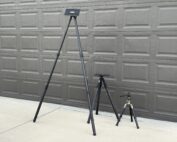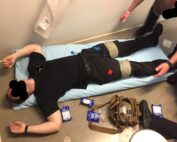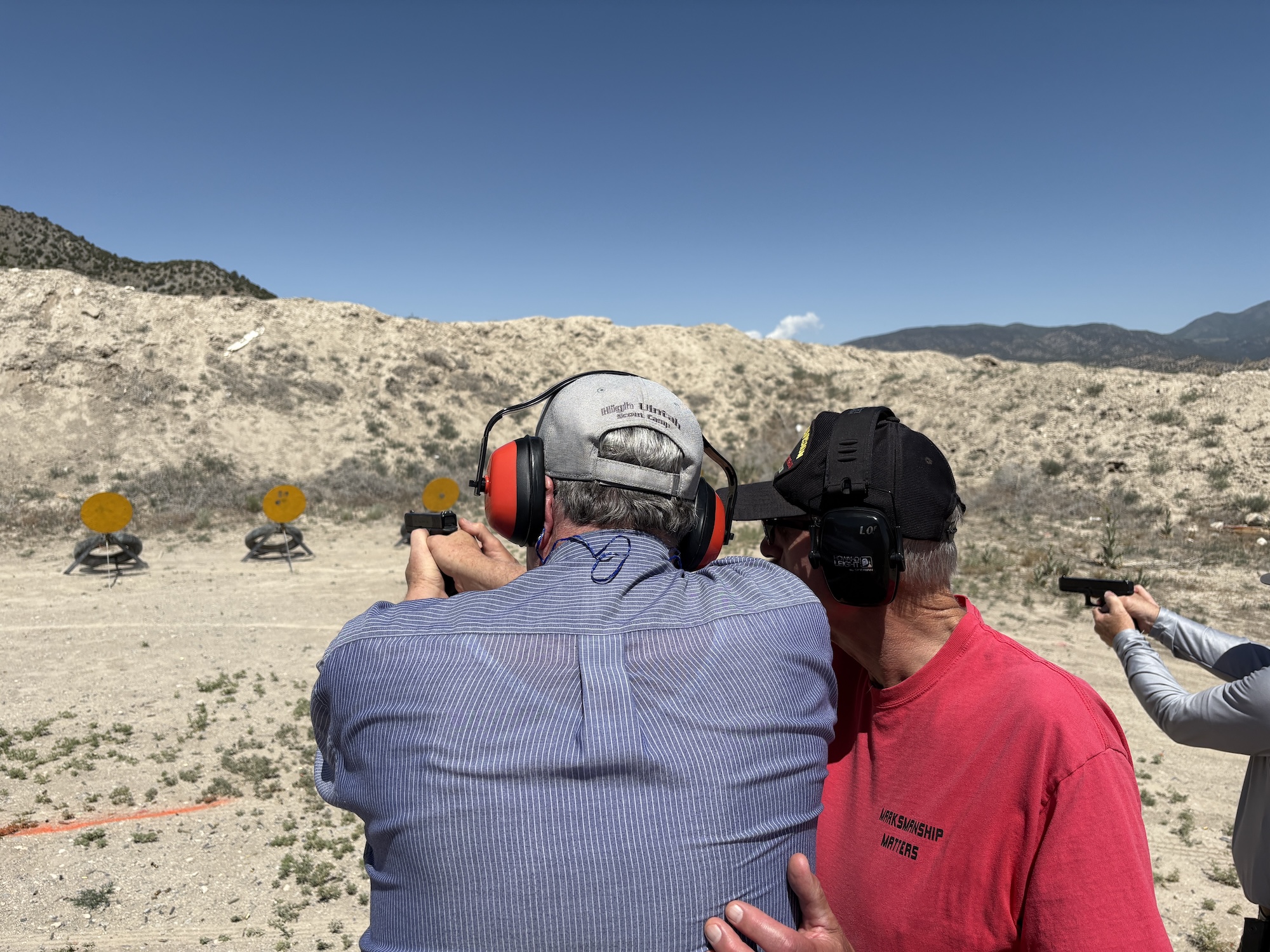
AC0114_cuff1
By Ralph Mroz
Photos Jason Frank
It’s Time To Rethink The Suspect Hokey Pokey.
Back in grandpa’s day, cops grabbed the bad guy, slapped the cuffs on and dispensed with the small talk. Then, sometime in the ’80s I think, someone looked at the stats on officer injuries and noticed most officer-involved fights happen when they’re handcuffing a suspect. Since cuffing is one of the few times in our interaction with the public that we are close enough to a suspect to actually get in a fight and physically interact with them, I’m not sure why this came as a surprise to the experts. But they pondered the fact for a spell and determined something had to be done. And they came up with a kinda-sorta goofy solution.
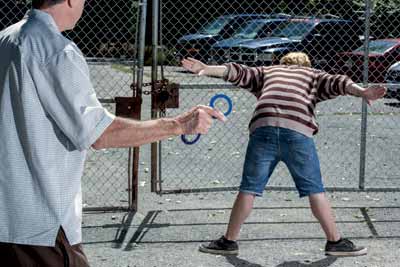
This choreographed cuffing position is still taught, but it takes an already compliant — not combative — suspect to get into it.
Suspect Hokey Pokey
This new idea was to place suspects in a position of disadvantage before we approached them, so as to minimize the dangers of approach and cuffing. And just how were we to “place them in a position of disadvantage”? Why, by asking them to place themselves there! Sure! Why wouldn’t that work?
“Turn around! Spread your feet apart! Point your toes outward! Extend your arms to the side! Palms out and facing me! Point your thumbs down! Move your arms back towards each other! Bend forward at the waist! Stop! Don’t move!”
Yeah, right.
I’m educated and sober, and English is my first language, but I wouldn’t understand those commands — especially under stress. Hell, Mikhail Baryshnikov couldn’t get it right the first time!
Plus, what are you going to do if they won’t, or can’t, perform your little dance? You have to go hands-on and they already know they’re about to be arrested. Basically, the hokey-pokey routine only works with people who are already compliant — who are least likely to fight us anyway.
Try this strategy instead. Approach the suspect and get him under physical control with old-fashioned physical control techniques — quickly — before you put the cuffs on. Of course it’s not 100-percent safe; nothing is (presumably they told you in the academy that policing is a dangerous job). But it’s safer than approaching them when they aren’t under control and you’ve given them notice of your intentions. Following are two tactics following this strategy.

The traditional “control first” technique is something many of us were taught in the academy. It starts out something like this, where you control the arrestee’s elbow and wrist.
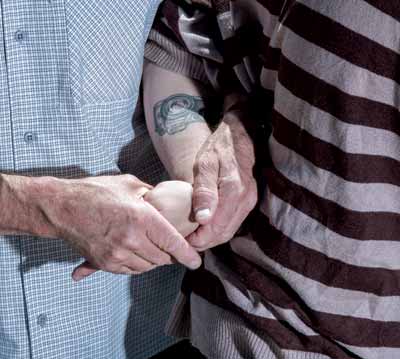
From there you can easily go into your preferred cuffing position, usually something like what’s shown here.

In theory, if the suspect gives you trouble you’re set up to go into an arm-bar … but arm-bars can be problematic for many officers.
Traditional Control
With the traditional approach, you place one hand on the suspect’s elbow and the other on his wrist. From this position you can go into a double-bent arm handcuff position, or if the suspect resists, an arm-bar takedown to prone handcuffing. This approach isn’t too bad; it has all the right elements, but if things go sour, it depends on the officer’s ability to execute an arm-bar. And unless you’re a high-level jujitsu black belt, it’s often a size- and strength-dependent proposition.

The Finger Grab Frisk position ends with you completing a wrist twist using the opposite hand that initiated the grab.
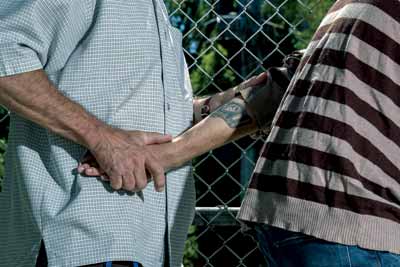
When your suspect’s palm is placed on your hip it’s very difficult for him to move or resist. And from here it’s very easy to move into your preferred cuffing position.
Finger Grab Frisk
The finger grab frisk is one of the techniques developed by veteran street officer George Vranos. George, a mere 145 pounds, has studied most of the striking, grappling and joint-locking techniques out there, and has done an extraordinary job of adopting them for small, uniformed (duty belt and vest wearing) officers in our liability-conscious profession. The finger grab frisk is a variation of the traditional outward wristlock and is the handcuffing technique I liked the best when I was on the job.
One version of it goes like this: You approach the subject in a neutral manner; if necessary using a ruse, “Hey, what kind of watch is that?” or “Dude, I need to see your hand.” Then, put the palm of your hand to the back of his; I remember it as “P to B,” or “make a peanut butter sandwich.” Rotate the suspect’s palm outwards. If you’ve ever studied Aikijutsu or any of the joint locking arts, you’ll recognize this lock — it’s a painful bummer to fight. The lock can be strengthened by placing the suspect’s palm on your opposite waist side. From here it’s a simple matter to go into the double-bent arm cuffing position.
I once used this technique on a very muscular New York drug dealer distributing to our area, and I got the most comical “WTF?” look from him … but no resistance. I liked to tell the suspect he was under arrest just after I applied one of these techniques because it couldn’t do any harm, it gave him a good understanding of why I was manhandling him, and it might have a fight-deterrent effect.
For more of George’s insights and techniques, visit www.factvideos.com, they are highly recommended.


 (No Ratings Yet)
(No Ratings Yet)
